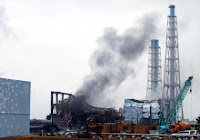In the picture are watermelons, green on the outside, but red on the inside. That serves as a clumsy metaphor for many environmentalists today: socialists with a superficial cover. If you expected me to blurt out the explanation behind that headline title, alas I'm not that smart, but George Reisman is. So I will yield to his wisdom. The excerpt below is from the conclusion of an article that does supply a brilliant explanation for my headline.
"Marxian “scientific socialism” was collectivism in its boisterous, arrogant youth. Environmentalism is collectivism in its demented old age. It will be much easier to overcome than was Marxism. Marxism, however falsely and dishonestly, at least promised major positives: the unlocking of human potential and the achievement of future material prosperity. Environmentalism is reduced to trying to find terrified people with less than the mentality of children, to whom it can offer the prospect of avoiding wind and rain. It is the intellectual death rattle of collectivism. When it has been overcome, a world-embracing capitalist economy will be able to come into existence and be capable in fact of achieving unprecedented economic progress and prosperity across the entire globe."
If you want to read the full explanation, go here, you will not regret that you did.
"Marxian “scientific socialism” was collectivism in its boisterous, arrogant youth. Environmentalism is collectivism in its demented old age. It will be much easier to overcome than was Marxism. Marxism, however falsely and dishonestly, at least promised major positives: the unlocking of human potential and the achievement of future material prosperity. Environmentalism is reduced to trying to find terrified people with less than the mentality of children, to whom it can offer the prospect of avoiding wind and rain. It is the intellectual death rattle of collectivism. When it has been overcome, a world-embracing capitalist economy will be able to come into existence and be capable in fact of achieving unprecedented economic progress and prosperity across the entire globe."
If you want to read the full explanation, go here, you will not regret that you did.



